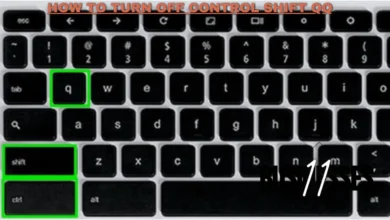Intel Unison What Should I Use for MMS Size Limit?

When it comes to sending multimedia messages (MMS), understanding size limits is crucial. Many of us have tried to send pictures or videos, only to find out they are too large to go through. The same applies to devices powered by Intel Unison.
If you’re wondering, “Intel Unison what should I use for MMS size limit,” this article will help you get answers and understand how to navigate those size restrictions.
This article aims to explain MMS size limits with Intel Unison, how to manage file sizes, and practical ways to stay within those limits.
What Is Intel Unison?
Intel Unison is a platform designed to enhance communication across devices. It allows users to send and receive files, manage messages, and work seamlessly between gadgets.
This platform, while convenient, comes with certain limitations, especially when it comes to sending multimedia messages (MMS).
But what exactly is the MMS size limit for Intel Unison, and how can we work around it? Let’s explore that by first understanding how MMS works on the platform.
How Does MMS Work on Intel Unison?
Intel Unison allows users to send and receive MMS, but just like any other service, it has size limits on the files you can send.
MMS messages include multimedia files such as images, audio, and video. To ensure smooth delivery, service providers and platforms enforce size limits, and Intel Unison is no different.
If you’re asking yourself, “Intel Unison what should I use for MMS size limit,” you’ll find that understanding how these messages are handled is the first step.
In general, the size limit is set by the platform, so knowing how to manage your file sizes is important.
What Is the MMS Size Limit on Intel Unison?
When it comes to “Intel Unison what should I use for MMS size limit,” you should know that the size limit usually ranges between 300KB to 600KB. This limit ensures that your MMS can be sent without getting stuck or rejected by the system.
Sending larger files may result in failure or partial delivery, so it’s crucial to keep your MMS within the limit.
If you’re dealing with videos or high-resolution images, this limit can be easily exceeded. Knowing the size restrictions in advance can help you avoid any frustration when trying to send files.
Why Is There an MMS Size Limit?
The question, “Intel Unison what should I use for MMS size limit,” is directly related to the need for efficient file transfers.
There is a limit because large files take up more bandwidth and can slow down the messaging service.
Additionally, service providers need to ensure that the files are optimized for various devices and network conditions.
Size limits help prevent system overloads and ensure that multimedia messages can be delivered across different networks and devices efficiently.
How Can You Check Your MMS File Size?
Before sending an MMS on Intel Unison, it’s a good idea to check the size of the file. On most devices, you can check the size by right-clicking on the file and selecting “Properties” or “Details.” For images or videos, editing software or your phone’s gallery often shows the file size.
Once you know the size, you can decide if you need to compress the file or make adjustments to fit within the limits of Intel Unison.
How to Compress Files for MMS on Intel Unison?
If your file exceeds the size limit, you’ll need to reduce it. There are several ways to compress images and videos without losing too much quality.
You can use online tools, apps, or software designed for file compression.
For example, JPEG or PNG images can be compressed using photo-editing software like GIMP or Paint.NET.
Similarly, videos can be compressed using software like HandBrake or online tools. Knowing “Intel Unison what should I use for MMS size limit” is only half the battle. Learning how to compress files efficiently will help you stay within that limit.
What Happens If You Exceed the Size Limit?
When your MMS exceeds the size limit on Intel Unison, the system may fail to send the message.
You might see an error message or find that the recipient only receives a part of the media. In such cases, resizing or compressing your files and trying again usually resolves the issue.
The question, “Intel Unison what should I use for MMS size limit,” becomes relevant here because many users wonder why their messages aren’t being sent.
Exceeding the limit often results in failed message delivery, so it’s crucial to stick within the allowed range.
What Are the Pros and Cons of MMS on Intel Unison?
Let’s look at the benefits and limitations of sending MMS on Intel Unison.
| Pros | Cons |
| Easy to send images, videos, and audio | Limited file size for MMS (300KB-600KB) |
| Integration with devices across platforms | May require compression for large files |
| Convenient for sharing multimedia files | Message failure if size exceeds limit |
How Can You Optimize Your MMS for Intel Unison?
If you want to make the most out of Intel Unison’s MMS feature while staying within the size limit, here are some tips:
Reduce Image Quality: Lowering the resolution of images before sending them can help reduce the file size.
You can easily do this in photo-editing software or by using online tools.
Trim Videos: Rather than sending long video clips, trim the unnecessary parts. Most devices have built-in editing features to shorten videos before sending them via MMS.
Convert File Formats: Some file formats are larger than others.
For example, converting a video from AVI to MP4 can significantly reduce its size without a noticeable loss of quality.
By understanding “Intel Unison what should I use for MMS size limit,” you’ll be better equipped to optimize your messages.
How Can Intel Unison Users Avoid Common MMS Issues?
Now that we’ve covered the basics of file sizes and limits, let’s look at common issues Intel Unison users face when sending MMS. The most common problems include failed messages, partial deliveries, and long delivery times.
These problems often arise when the size limit is exceeded or the file is not properly formatted.
Here’s how to avoid these issues:
Check File Size Before Sending: Always check the size of your file before attempting to send it. This way, you can avoid the frustration of failed messages.
Use File Compression Tools: If your file is too large, use compression tools to reduce its size without losing too much quality.
Keep Files Short and Simple: Long videos and high-resolution images can take up a lot of space. Try to keep your MMS files short and simple to ensure they get through.
These steps can help you stay within the “Intel Unison what should I use for MMS size limit” guideline and ensure your messages are delivered successfully.
Can I Use Alternative Methods for Larger Files?
If the files you want to send are too large for MMS, you can always use alternative methods like cloud storage or email.
Intel Unison supports various file-sharing methods, so if the file is too big, you can upload it to cloud services like Google Drive or Dropbox and share the link with your recipient.
Understanding “Intel Unison what should I use for MMS size limit” doesn’t mean you are limited to just MMS. Using alternative methods ensures that you can send larger files without compromising quality.
FAQ Section
What is Intel Unison?
Intel Unison is a platform designed for seamless communication across multiple devices. It allows users to send and receive messages, files, and multimedia content easily.
What is the MMS size limit for Intel Unison?
The MMS size limit on Intel Unison typically ranges between 300KB to 600KB. This limit ensures that your multimedia messages can be sent and received without issues.
What types of files can I send via MMS on Intel Unison?
You can send various multimedia files, including images, audio clips, and videos, through MMS on Intel Unison, as long as they adhere to the size limit.
What happens if my MMS exceeds the size limit?
If your MMS exceeds the size limit, the message may fail to send, or the recipient may only receive part of the content. It’s essential to keep your files within the specified size limits.
How can I check the size of my file before sending it?
You can check the size of your file by right-clicking on it and selecting “Properties” (on Windows) or “Get Info” (on Mac). Mobile devices often display file sizes in the photo or video gallery.
What are some tips for compressing files for MMS?
To compress files, you can use photo-editing software for images or video editing tools for videos. Online compression tools are also available, making it easy to reduce file sizes without significant quality loss.
Can I use other methods to send larger files instead of MMS?
Yes, if your files are too large for MMS, you can use alternative methods like cloud storage (e.g., Google Drive, Dropbox) or email to share larger files. Simply upload the file and share the link.
Is there a way to optimize images and videos for better MMS delivery?
Yes, optimizing images by reducing their resolution and trimming videos to eliminate unnecessary parts can help ensure successful MMS delivery while keeping file sizes within limits.
What are the advantages of using Intel Unison for MMS?
Using Intel Unison for MMS allows for easy sharing of multimedia content across devices, integration with various platforms, and the convenience of sending messages without needing additional apps.
How can I troubleshoot MMS issues on Intel Unison?
If you experience issues with MMS on Intel Unison, ensure that your file sizes are within the limit, check your internet connection, and consider using alternative methods for larger files if necessary.
Conclusion
The question of “Intel Unison what should I use for MMS size limit” is important for anyone who regularly sends multimedia messages.
By keeping file sizes within the 300KB to 600KB range, you can ensure your messages are sent successfully. If your file exceeds the limit, compressing or trimming it will usually solve the issue. And when MMS isn’t the best option, there are always alternatives like cloud storage to help you share larger files.

![ffxiv [ocn] you should see me in a crown mod](https://elevenbusinesses.com/wp-content/uploads/2024/10/authentic-1-390x220.webp)



